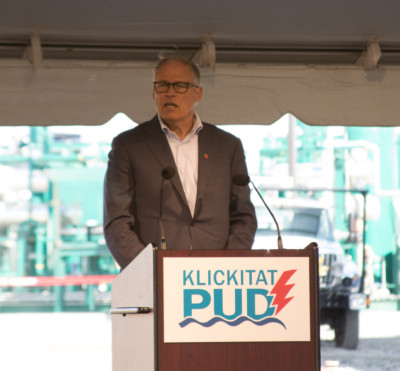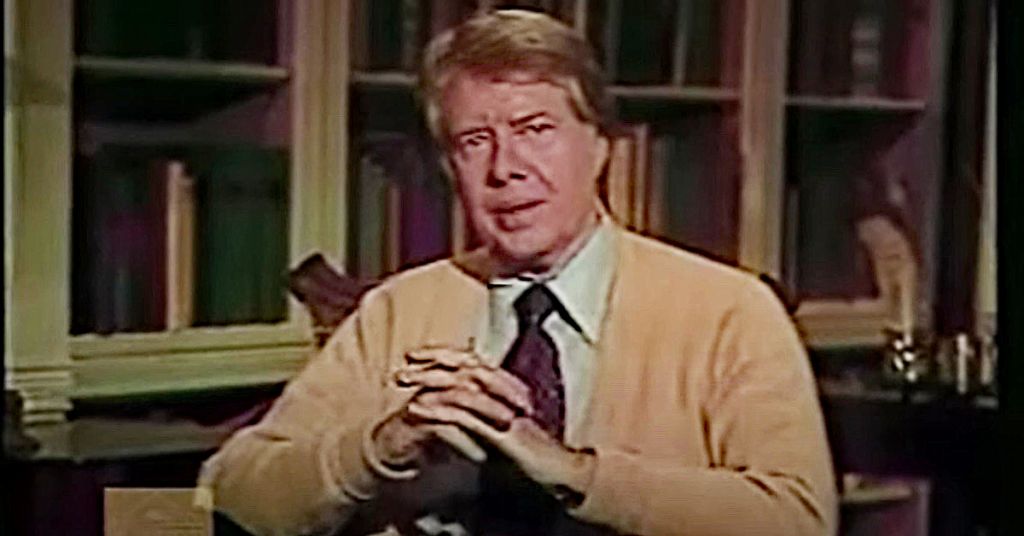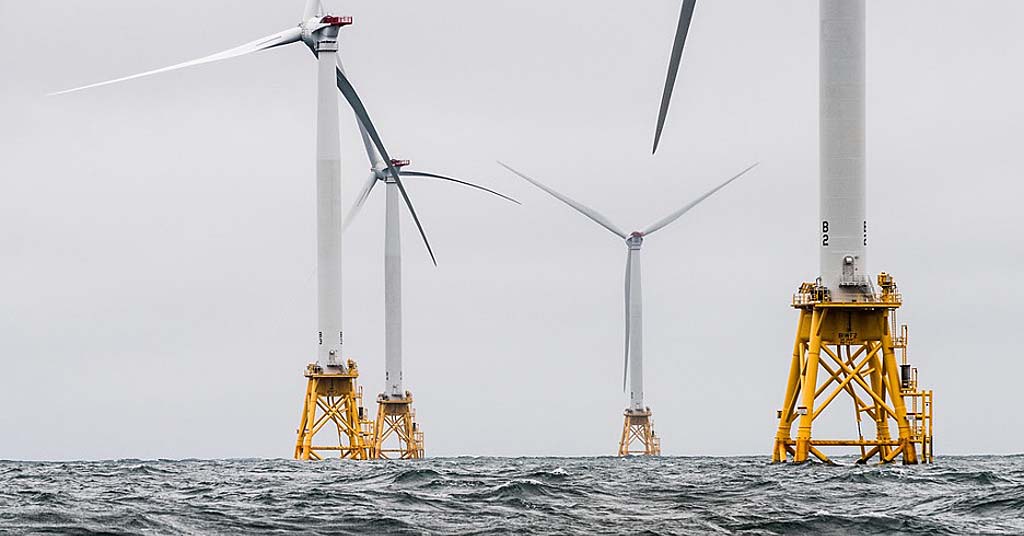
Standing alongside other supporters and developers of the renewable energy project, Klickitat PUD Commissioner Dan Gunkel joins Gov. Inslee in cutting the ribbon. Photo by Dac Collins
By Dac Collins. Sept. 19, 2019. A crowd of roughly 135 people gathered at the Roosevelt Regional Landfill on Wednesday, Sept. 18, to celebrate the dedication of the HW Hill Renewable Natural Gas Plant. That group included legislators, lobbyists, regional stakeholders and residents of Klickitat County, as well as the engineers, contractors, commissioners, managers and other employees who have worked together since 2014 to make the innovative renewable energy project a reality.
The HW Hill facility started producing renewable natural gas (RNG) in November of last year. This process requires Republic Services, the owner and operator of the landfill, to harvest the methane, nitrogen, carbon dioxide, oxygen, water and other volatile organic compounds (VOCs) that are released during the anaerobic decomposition of garbage. Klickitat Public Utility District then scrubs and filters out most of those elements, resulting in a compressed form of natural gas that is made up of 98 percent methane. This EPA-approved cellulosic biofuel can then be used for transportation, replacing diesel in heavy duty engines and thereby reducing the greenhouse gas emissions of those vehicles by at least 60 (and up to 100*) percent.
The facility is designed to produce around 5,701 MMBTU’s of energy per day. To put that in perspective, a gallon of diesel fuel has an energy content of around 139,000 BTUs. So the 5,062 MMBTUs that were produced at the H.W. Hill facility on Jan. 2, for example, are equivalent to roughly 36,482 gallons of diesel.
Looking at this rate of production over a longer period, the HW Hill facility can produce the energy equivalent of 14 million gallons of diesel per year.
For the time being, the gas is being piped via the Williams Northwest Interstate Pipeline to California, where there is more advanced natural gas infrastructure and, accordingly, a higher demand for the fuel. After arriving in California, the gas is then utilized by different transportation sectors, including public transit buses, Over The Road trucks, airport shuttles… even garbage trucks.
To say that garbage trucks running on re-purposed garbage is exciting would be an understatement. And the sustainable, closed-loop system that facilities like the HW Hill gas plant can help create is the main reason why Gov. Jay Inslee travelled halfway across the state to share his support for the project.
Before performing the official ribbon cutting, Inslee gave a speech commending what he called a “visionary accomplishment”. Senator Curtis King also spoke, as did Klickitat PUD Comissioners Dan Gunkel and Doug Miller, Klickitat PUD General Manager Jim Smith, Republic Services’ VP of Government and Regulatory Affairs Dan Jameson, and Johannes Escudero, the CEO and Executive Director of the California-based Renewable Natural Gas Coalition.
Senator King alluded to the 2015 legislation that made it possible for public utilities to produce and distribute renewable natural gas. He also thanked Republic Services “for operating a state-of-the-art landfill.”
“That might not sound like much,” King said, “but let me tell you, it is. It is probably one of the best landfills in our country, and we need to recognize that today.”
Klicktat PUD General Manager Jim Smith also shared his appreciation for Republic Services’ long-term vision and commitment to renewable energy, which was critical in allowing the public utility district to utilize the methane harvested from the landfill.
“This is truly a great day for Klickitat County,” Smith said before calling attention to the wealth of people who made the project possible. He applauded the tenacity and drive of Kevin Ricks, who led the RNG team, as well as the “plant operators, engineers, purchasing, meter shop technicians, mechanics, contractors, accountants, finance, customer service representatives, crews” and countless other employees who played a vital role in the project’s inception and implementation.
[perfectpullquote align=”full” bordertop=”false” cite=”” link=”” color=”” class=”” size=””]“We are both lucky and blessed with dedicated and skilled employees, and are very, very proud of their efforts in accomplishing something that even larger utilities would struggle to do.”[/perfectpullquote]
Johannes Escudero spoke to the larger implications of the HW Hill facility, and what this technology means for a society that is now forced to come to terms with the tremendous amount of waste it generates on a daily basis.
“The reality is so long as human and animal life populate our planet, and consume and digest organic materials, those organics will need to be disposed of,” Escudero said.
“And regardless of how or where, or who pays for the diversion, those organics will eventually decompose through a natural process called anaerobic digestion and produce methane gas. We know methane is a short-lived climate pollutant, and that it’s many times more potent and harmful than carbon as a greenhouse gas. So what we do as a society with methane matters.”
Escudero added that the state-of-the-art facility should serve as an example for the additional 2,000 landfills located throughout the country — as well as the 8,000 large dairies and 17,000 wastewater treatment plants — that are mostly burning off and wasting the methane they generate instead of converting it into a “domestically produced, ultra-low carbon transportation fuel.”

Gov. Inslee speaks at the dedication ceremony on Sept. 18. Photo by Kathi Ricks, Kat Ricks Photography, LLC
But it was Gov. Inslee’s speech that kicked off the event, and it was his presence, in part, that drew a crowd topping 100 people. He shared his overwhelming support for the project and pointed out that “this can be done in many, many forms across the state of Washington.”
The governor summed up the environmental benefits of the HW Hill facility — and the technology’s role in a more sustainable future — by singling out one type of trash that can be found in most landfills: rotting fruit.
“We’re bringing up oranges from California, and we’re enjoying and eating those oranges. Then we’re taking the rotting orange peels and turning them into a transportation fuel and shipping it back to California,” Inslee said.
“That is a virtuous circle if I’ve ever seen one.”
*According to the Vice President of Clean Energy Fuels, which buys some of the RNG produced at the HW Hill facility: “When you factor in both the criteria pollutants and the emissions reductions associated with greenhouse gases, your greenhouse gas emissions reductions with renewable natural gas are typically upwards of 100% when compared to your diesel footprint.”










